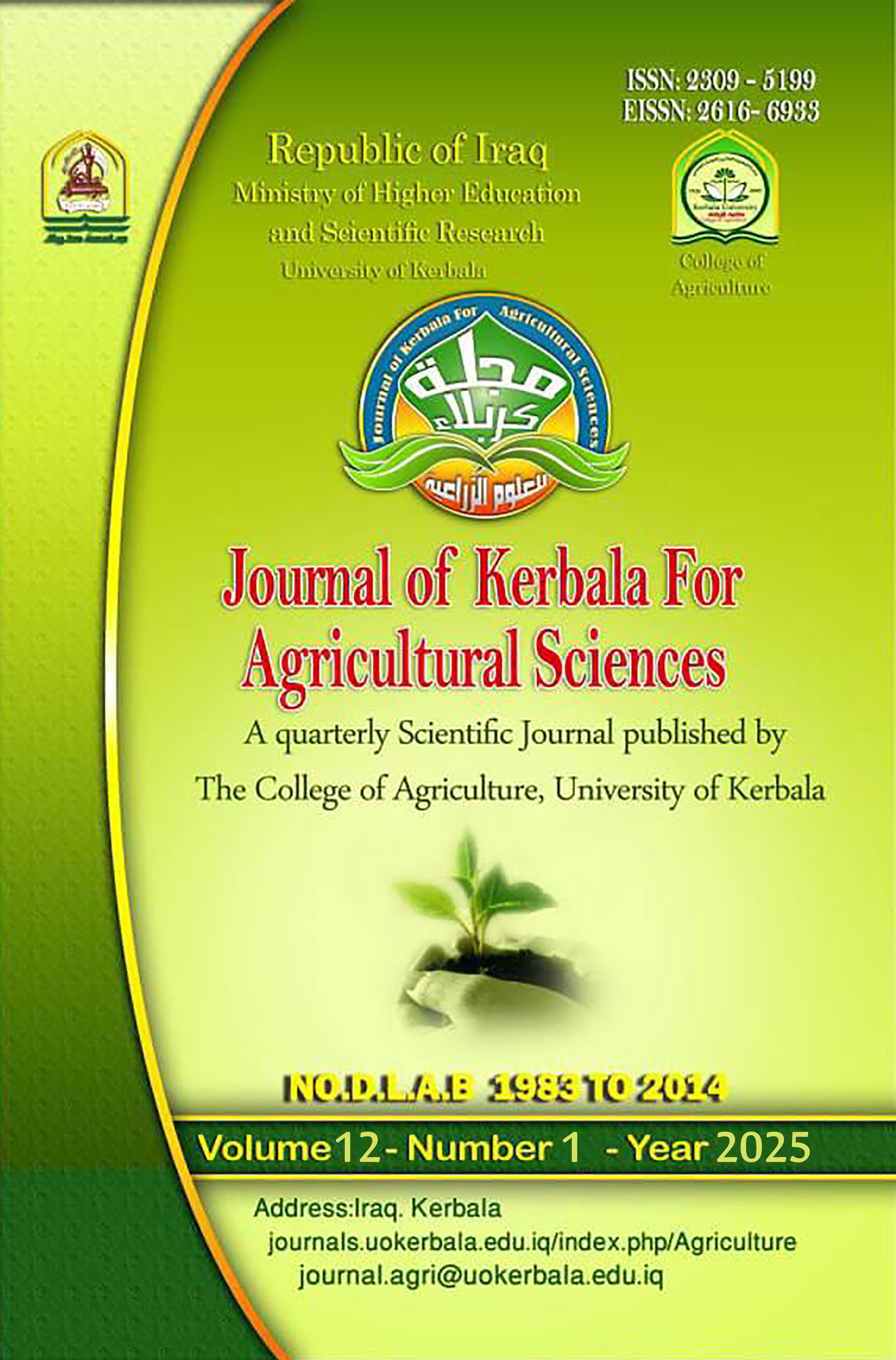Effect of gibberellin and methyl jasmonate on the vase age and qualitative characteristics of rose leaves and flowers Rosa hybrida cv. Red Intuition – DELstriro
DOI:
https://doi.org/10.59658/jkas.v12i1.3236Keywords:
cut flowers, MeJA, GA3, rose, carotenoidAbstract
The experiment was conducted at the Agricultural Research Station of the College of Agriculture, University of Kufa, during the spring season 2024 to study the effect of spraying gibberellic acid (0, 75, 150, and 225 mg L-1) and methyl jasmonate (0, 50, 100, and 200 mg L-1) in the qualitative characteristics of flowers and the flowering age of rose plants. A factorial experiment was carried out using a Randomized Complete Block Design (RCBD) with three replications. The results showed that the vase age and flower stem diameter increased when plants were sprayed with gibberellic acid at concentrations of 75 and 150 mg L-1 with 200 mg L-1 of methyl jasmonate, while an improvement was observed in flower diameter and carotenoid content of leaves when treated with gibberellic acid at a concentration of 75 mg L-1 with 100 mg L-1 of methyl jasmonate. As for the number of petals, an increase in their number was observed when spraying with gibberellic acid at a concentration of 150 mg L-1 with 100 mg L-1 of methyl jasmonate, while the higher concentrations of 225 mg L-1 of gibberellic acid in combination with 200 mg L-1 methyl jasmonate led to an inhibition in the hydrogen peroxide content of leaves. It could be concluded from this study the role that plant growth regulators play in supporting plant growth, which has a positive impact on the state of plant growth and improving the qualitative characteristics of flowers, but this requires further studies on this subject in order to increase interest and encourage the spread of cultivation and circulation of cut flowers as an economic resource for the region.
Downloads
Published
How to Cite
Issue
Section
License
Copyright (c) 2025 Copyright (c) 2024 is the Author's article. Published by the Journal of Kerbala for Agricultural Sciences under a CC BY 4.0 license

This work is licensed under a Creative Commons Attribution 4.0 International License.
Licensing Terms
All articles are published under a Creative Commons License and will be directed to the Creative Commons Attribution 4.0 International License (CC BY 4.0) That permits use, distribution, and reproduction in any medium, provided the original work is properly cited. This license also allows the work to be used for commercial purposes.
Use by both non-commercial and commercial users
This content is licensed under a Creative Commons Attribution 4.0 International (CC BY 4.0) license, permitting use by both non-commercial and commercial users. Individual users may access, download, copy, display, and redistribute the articles to colleagues, as well as adapt, translate, and text- and data-mine the content, subject to the following conditions:
- The author's moral rights, including the right of attribution and the right to protect their work from derogatory treatment, are respected.
- Where content in the article is identified as belonging to a third party, users must ensure that any reuse complies with the copyright policies of the owner of that content.
- If the article content is reused for research or educational purposes, users should maintain a link to the appropriate bibliographic citation, including the DOI and a link to the published version on the journal's website.






